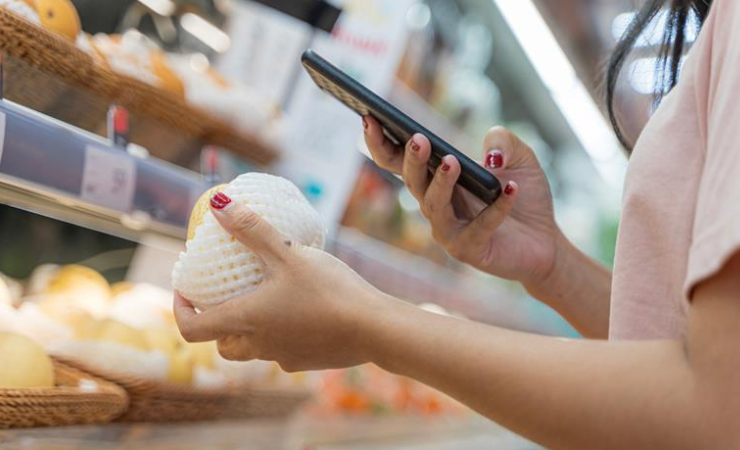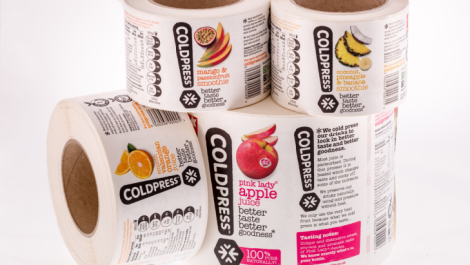Are you – more importantly your customers selling into Europe – ready for the introduction of digital product passports, asks Sean Smyth.
A significant development that is going to impact label and packaging converters is the proposed ‘digital product passport’ (DPP) that is currently being discussed by the European Commission.
The DPP will provide accessible data about a product’s origin, composition, manufacturing processes, characteristics, lifespan, maintenance and disassembly directions, recycling instructions – all relevant details that can be accessed by players across the value chain, including consumers. The proposal aims to make this information available across the entire product lifecycle, with much of the current discussion focusing on the data that will be included.
For consumers, the data passport will provide more information and encourage repair and reuse of some items rather than the current behaviour of disposal first. If (more probably when) this comes into force, every product will have to incorporate a code that provides access to a lot of information, including: specific product data, traceability data, repair and recycling data and sustainability data. It may also include information on returns or instructions on how to prepare a product and its packaging for recycling.
This is not the first instance of linking data to a product. Your car has a digital logbook held by the authorities with lots of information that can be shared. New stamps include barcodes. In Russia many products were labelled as part of the government’s Chestny Znak system. GS1 (the body behind barcoding) has a product link in development and, hopefully the EU DPP will share data formats. It is part of a wider trend for individual product identification, because this could enable several important functions.
Whatever digital information is being used it must be connected through a data carrier, probably a 2D datamatrix/QR code, to the product identifier, which itself is a unique number that must comply with the ISO/IEC 15459:2015 standard. This data carrier must be physically present on the product, its packaging, or product documentation. The data will allow stakeholders to add further information to the digital link as a blockchain application across supply chains, so a brand cannot make changes in isolation, which should avoid potential greenwashing.
Some may be printed through coding and marking systems, although the existing systems will not be able to produce the standard of readability demanded directly onto irregular shaped items. So some will be through digitally printed labels and packaging, with unique individual codes a possibility. The digital link will be to a validated digital twin representing a model, a batch or a lot, and even a single item. In the latter case each code will have to be unique – a significant driver for the further adoption of digitally printed packs and labels.
The final details have not been signed off but there are some general requirements for digital product passports, and this is where it gets interesting for label and packaging printers. Lee Metters, group business development director at Domino, explains, ‘[We] supply a lot of coding and marking systems as well as digital presses and printbars. We see significant growth in supplying high quality inkjet systems onto analogue presses to enable variable data printing at high speed to meet future requirements, such as digital product passports. We are seeing more brands that understand the value of control and there are data management companies springing up to provide supply chain visibility or to gather consumer insights through consumer scanning. There are opportunities for converters to add digital capability through our products and offer additional services to their customers.’
The European Commission is currently drafting a regulation on DPPs with final approval expected in 2024 and then implementation for the first product groups in 2026/27. The idea is to allow more informed choices by consumers. Providing this information would allow any individual to compare products based on specific criteria they value. That could be the ingredients, carbon emissions, recycled content and recyclability/repairability that are specific to them, making a more informed choice about the products they endorse. Additionally, it could allow authorities to verify compliance with local legislation obligations, identifying extended producer responsibility and potentially tax liabilities. It can certify products’ compliance with regulations, standards and all kinds of industry-specific requirements that can be easily verified by authorities, auditors and consumers. These are in addition to advantages for brands of product identification.
The EU hopes DPP is to accelerate Europe’s transition to a circular economy, boosting material and energy efficiency, extending product lifetimes and optimising product design, manufacturing, use and end of life handling.
It may also provide new business opportunities through circular value retention and optimisation, for example product-as-a-service activities, improved repair, servicing, remanufacturing, and recycling through improved access to data. At the end of a product’s usable life, DPPs can be used to create a picture of how much waste is being caused by a particular product, product range, or manufacturer – enabling them to address causes of waste and contribute positively to sustainability and net zero goals.
These are laudable goals, and potentially opportunities for label and packaging converters. Perhaps some converters will be able to help their customers to prepare and roll out the technology, another level of service beyond just printing the packs and labels. This capability is being pushed to other products – the battery DPP will be rolled out in 2026 – with ‘most products by 2030’.
Are you – more importantly your customers selling into Europe – ready? Whatever the format and content of the digital product passport there has to be a printed readable code. There will be opportunities to help them redesign and print suitable information on your digital presses going forward.
This article was first published in the January/February 2024 issue of Digital Labels & Packaging, which you can read online here






